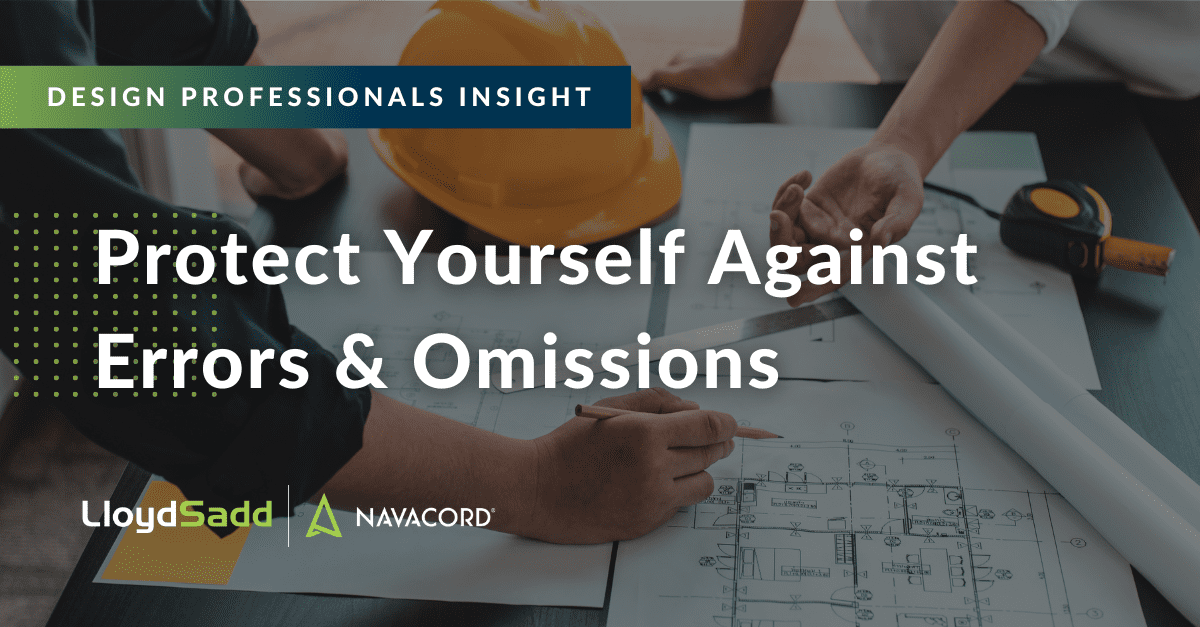Protect Yourself Against Errors & Omissions

In your field of professional services, you are expected to provide quality services and produce error-free work on a daily basis. Such precision is obviously important in such a highly skilled industry, but despite your best intentions, some mistakes or misjudgments are bound to occur. Unfortunately, when they do, even the smallest error can have serious consequences. Clients could sue you or your company, and in addition to paying to defend yourself in court, you would also be responsible for potentially extensive restitution costs if found at fault.
Professional Liability Coverage
First and foremost, architects and engineers can protect themselves with professional liability insurance coverage. In the event of a claim, this policy will cover the cost of defending you in court and any monetary damages awarded to the claimant if you are found at fault.
However, just purchasing coverage is not enough. You will also need to engage in effective risk management, contract management, and report claims on first knowledge. Reporting and responding to claims immediately by developing an appropriate response plan can assist in achieving a favourable outcome.
Quick Response Plan
Your best risk management defence is to craft a very specific plan for responding to errors and omissions (E&O) claims. The following 7 elements should be considered when developing your plan:
1. Report the claim to your insurer as soon as possible and in accordance with the requirements of your policy. Does the company accept a verbal notification, or are you required to notify in writing?
2. Contact your legal counsel and request that they represent you in the claim. You should determine who this is before a claim occurs. Your insurer may provide you with someone; otherwise look for one who has experience with E&O claims in your industry.
3. Visit the project site as soon as possible after the claim. Often, it is smart to document relevant conditions and gather information. Consider gathering documents, taking notes and photographing anything relevant to the claim. When possible, this should be done in the presence of your insurer or legal counsel.
4. Identify or hire an expert. The claimant will generally hire an expert witness to testify that you breached your professional duty, so you should have an expert to defend your work. This could be a third party or even you or someone from your firm
5. Designate a claims management project team within your office. Who will handle assembling and reviewing documents, chronicling events leading up to the claim, communicating with involved parties, attending depositions and other necessary duties?
6. Inform any sub-consultants of the claim. They will have to defend their portion of the work, so they should be involved in the claim from the beginning
8. Assemble documents and stay organized. A large claim can be very time-consuming, but the more organized you are with documents and timelines, the less it will cost you in lost billable hours.
To download this insight, click here: E&O_Insight_Protect Yourself Against E&O_LS